Caesarea Maritima was one of the biggest ports in the ancient Mediterranean during Roman times. Located in the Sharon Plain in Israel, Caesarea has now being rediscovered after laying centuries in ruins. Here are the reasons why the site deserves a visit!
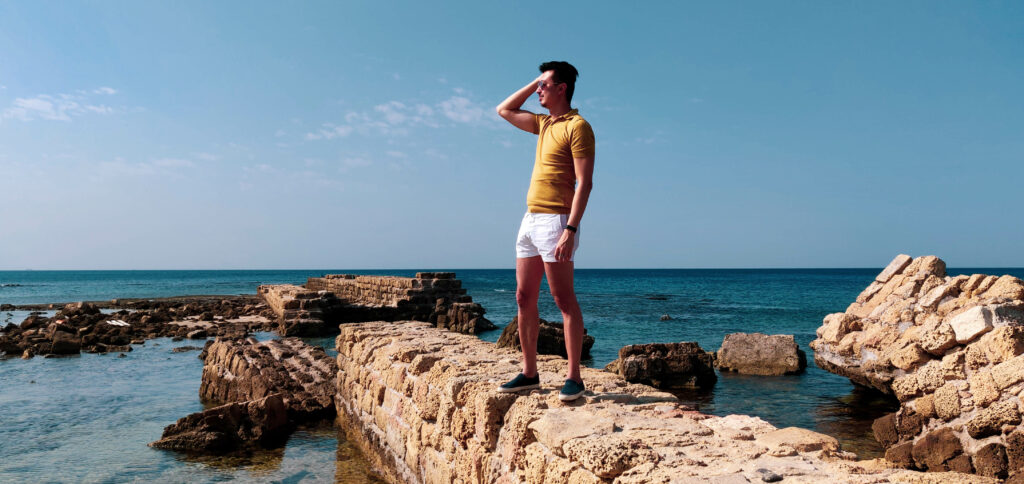
The Origins of Caesarea Maritima
The site was originally a Phoenician trading village, called ‘Stratonos pyrgos‘ (Straton’s Tower), founded by Straton I, King of Sidon (located in modern-day Lebanon) who reigned in the years 365-352 BC.
When the Romans arrived and took over the Hasmonean Dynasty of the Kingdom of Judea, the area became more and more romanised. The whole of Judea was then awarded by Rome to the client king Herod the Great in 30 BC. Under Herod, the city underwent a huge expansion project and was renamed after the Roman Emperor Caesar Augustus.
The Decline of Caesarea Maritima
By the time it was completed, with two concrete jetties and breakwaters using pozzolana from Italy, Caesarea Maritima was the largest port in the Mediterranean Sea.
Trade grew and the city as well. By 6 AD, Caesarea Maritima even replaced Jerusalem as the official residence of its governors and the civilian and military capital of the now Roman province.
When the Roman Empire divided into East and West in 390, Caesarea Maritima became the capital of the new province of Palaestina Prima, of the Eastern ‘Byzantine’ Empire.
But with the Arab Conquest of 640, Caesarea was the last city to have fallen into the hands of the Rashidun Caliphate. The city was probably abandoned by then, and the harbour silted up and was unusable by the 9th century.
With the arrival of the crusaders in the First Crusade in 1101, Caesarea came under Christian hands and was incorporated as a dominion under the Kingdom of Jerusalem. King Louis IX of France even fortified it with new city walls and moat. But it was lost again in 1265 to the Mamluks who destroyed the city completely in order to prevent it from being recaptured by the Christians.
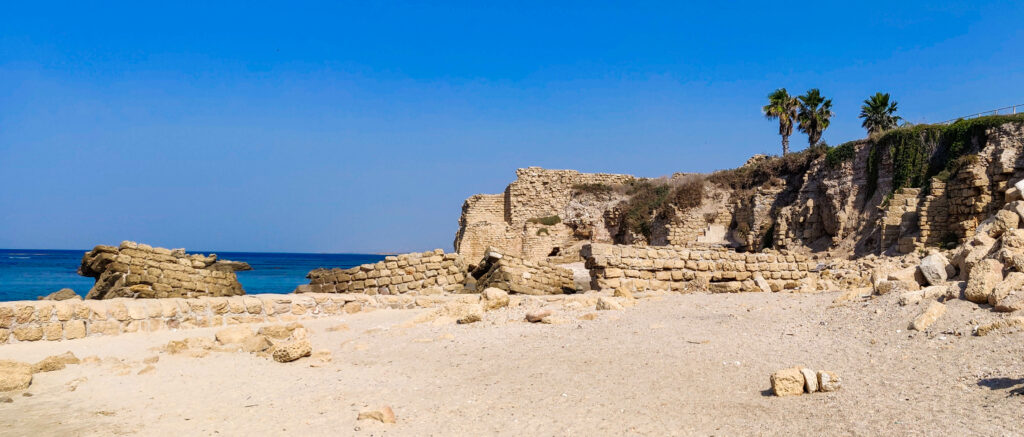
What is there to see in Caesarea Maritima?
The archaeological site of Caesarea Maritima has been excavated since the 1950s and work is still being done. With the sand and water level pushed back, so much has been revealed of this Roman-era Judean city.
The ruins of the harbour are clearly a site to behold. One can certainly imagine the scale and magnificence of it in the ancient world.
The hippodrome that has been uncovered from underneath centuries of sand and seawater must have been one of the most beautiful ones in the Roman world, with games being held against the backdrop of the blue sea.
Likewise, the amphitheatre has been restored with many of the lower structures being the original Herodian foundation.
If you arrive by car, try to drive north along the coast where you can still see the ruins of the Roman aqua-duct that brought freshwater to Caesarea Maritima, running along the sandy beach.
For more information, check out the website of the Caesarea National Park:
www.parks.org.il/en/reserve-park/caesarea-national-park/
Before you go:
Check out my post on: 7 things to do in and outside of Tel Aviv

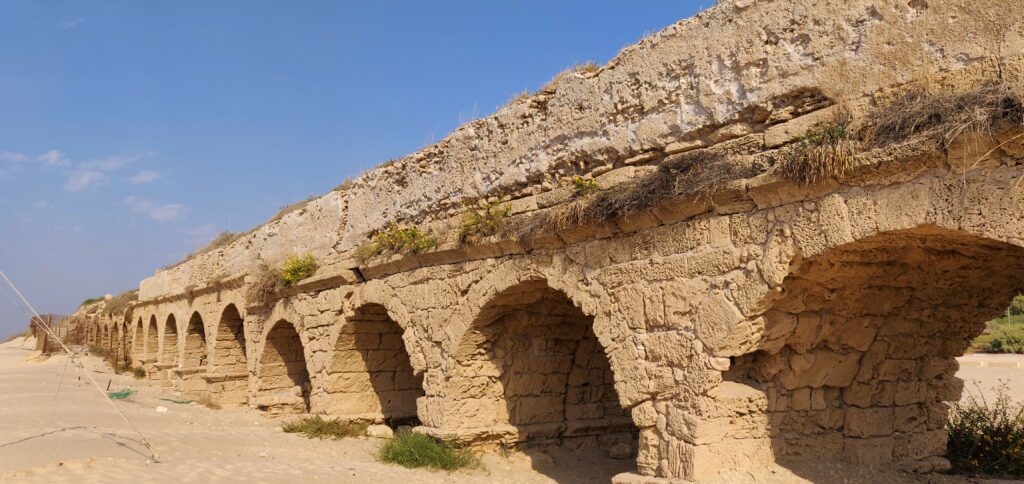

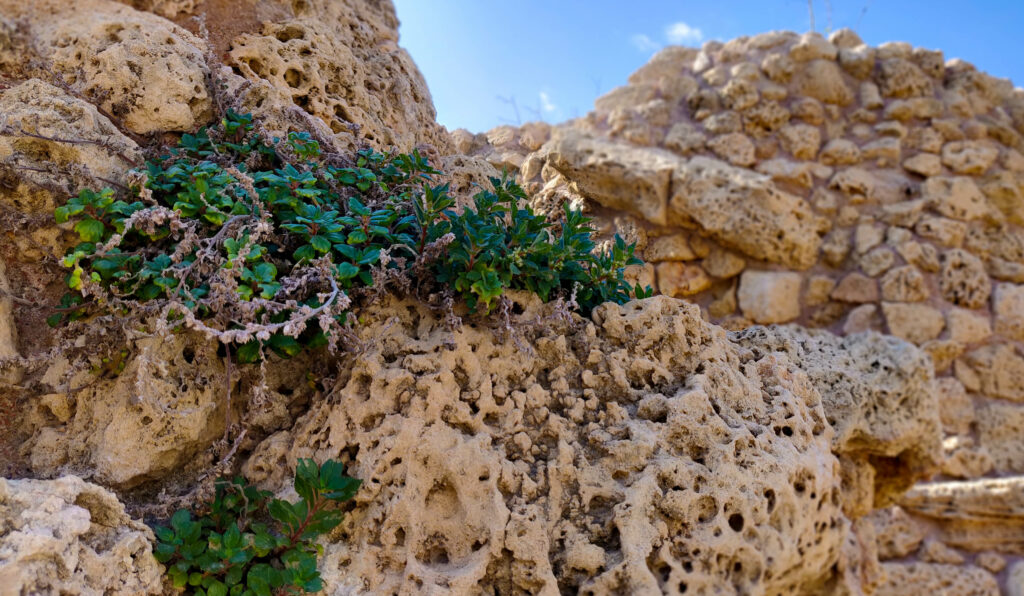


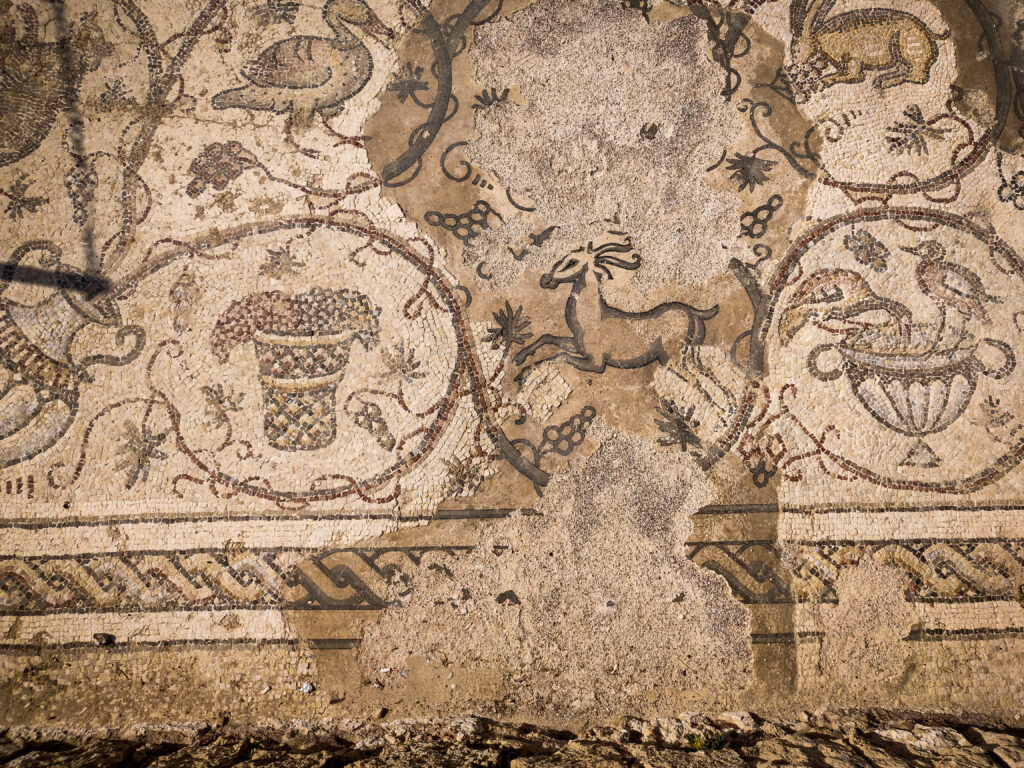

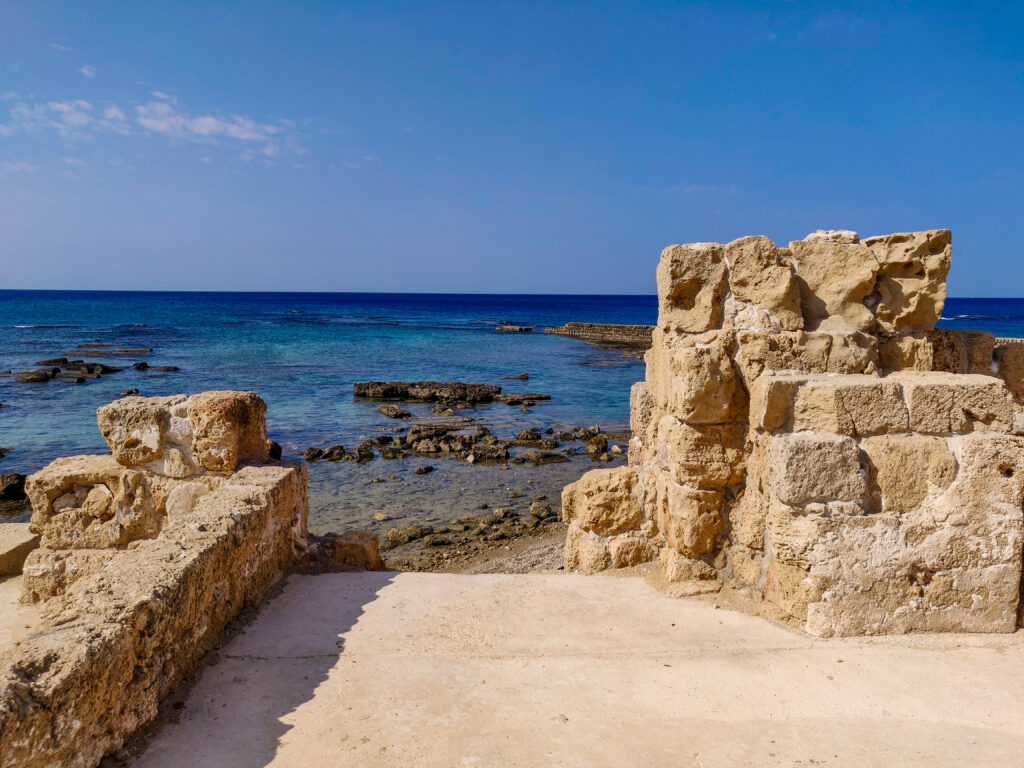
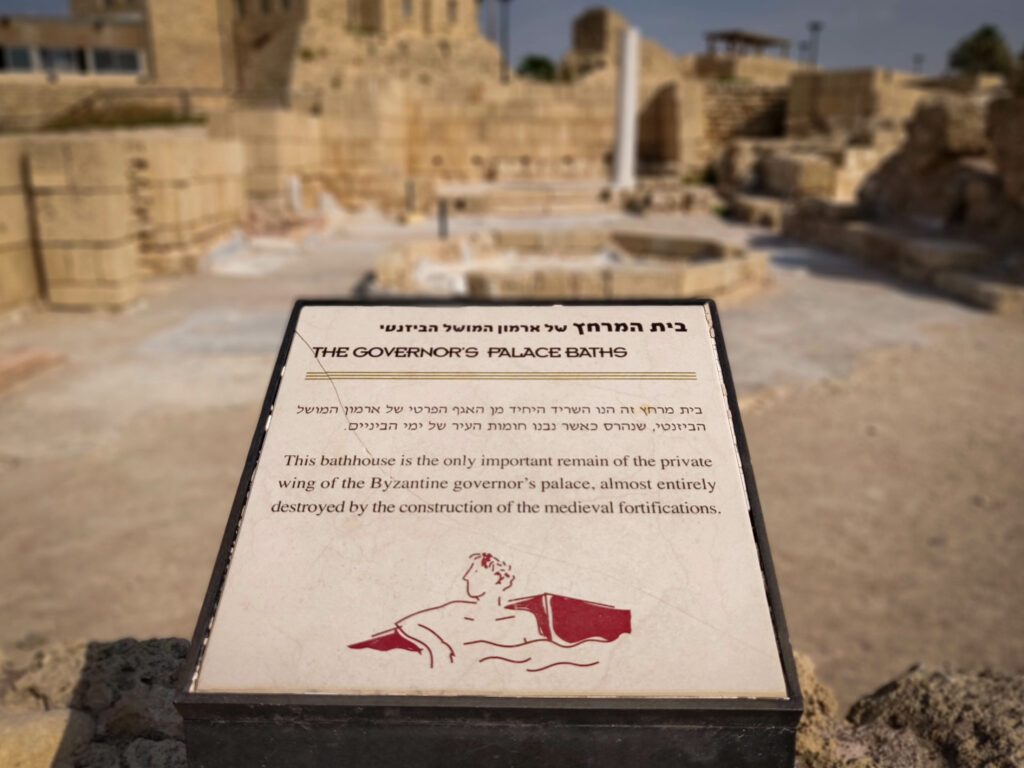

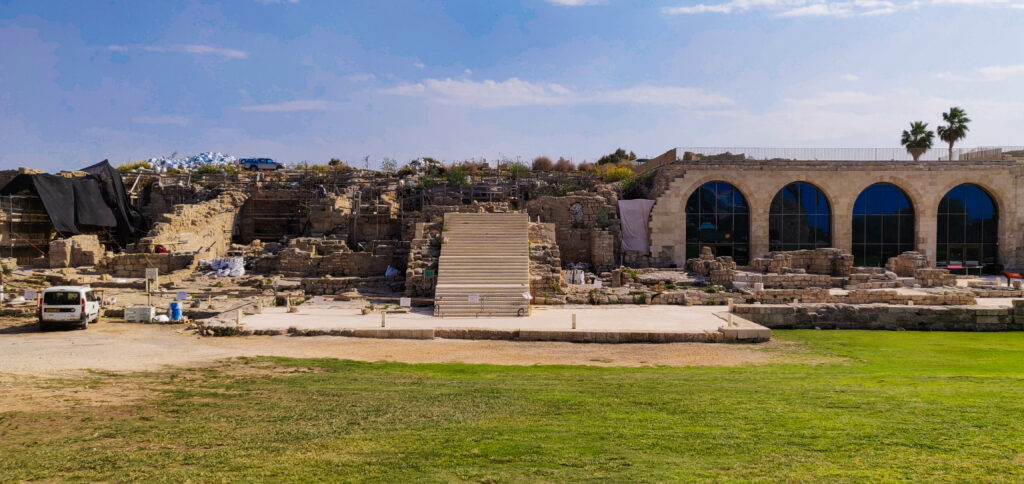
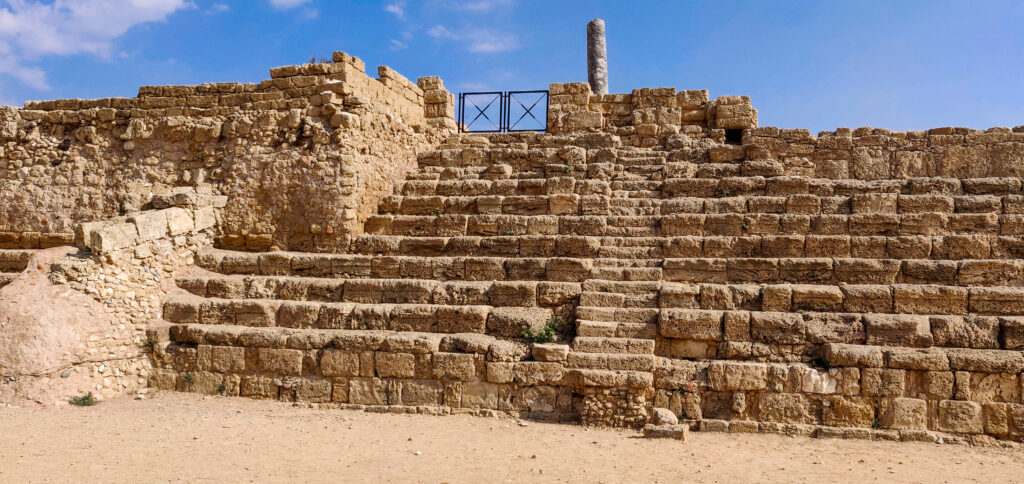
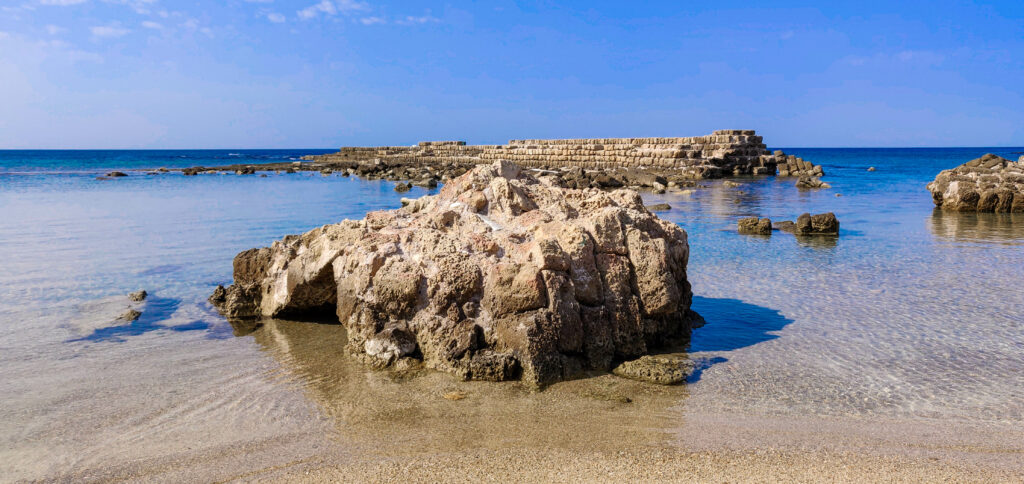
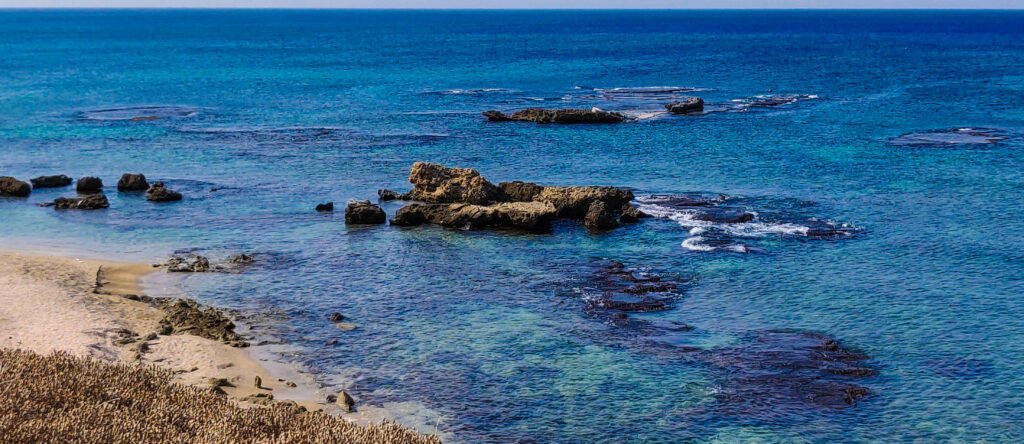

1 Comment